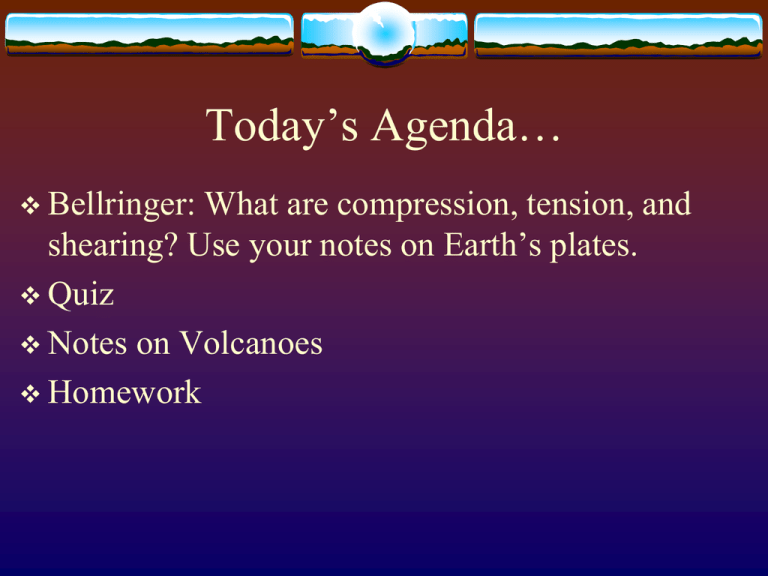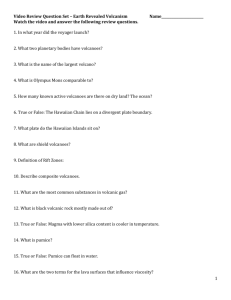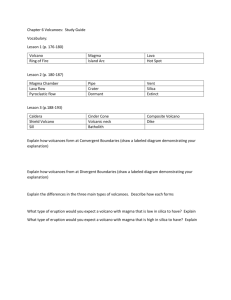Volcanoes
advertisement

Today’s Agenda… Bellringer: What are compression, tension, and shearing? Use your notes on Earth’s plates. Quiz Notes on Volcanoes Homework Volcanoes Study Pack #5 Today’s Goals… I can explain how different types of volcanoes form. I can describe how a volcanic eruption occurs. I can describe the stages of a volcano. What are volcanoes? Weak spots in the crust where magma comes to surface, cools, and becomes cone-shaped layers of rock Where are volcanoes located? 600 active volcanoes on land Many more beneath the sea Volcanoes occur in belts that extend across continents and oceans Ring of Fire formed by many volcanoes that circle the Pacific Ocean Ring Of Fire Where are volcanoes located? Volcanic belts are found along the plate boundaries Mostly divergent plate boundaries or convergent plate boundaries where subduction occurs Some An volcanoes also occur at hot spots area where magma melts through the crust Types of Volcanoes Cinder-Cone Composite Shield Cinder Cone Steep, cone-shaped hill or mountain Lava piles up and hardens Cinder Cone Sunset Crater, Arizona Composite Form at convergent plate boundaries where one plate is pushed (or subducted) under another plate Magma is forced up through many cracks in the crust Sometimes explosive Composite Mount St. Helens, Washington Shield Often form underwater at divergent plate boundaries Can also form over hot spots Lead to the formation of the Hawaiian Islands Shield Kilauea, Hawaii Inside a Volcano Page 302 Magma flows from the magma chamber up the pipe Magma flows out of the vents and becomes lava Lava often collects in the crater and then flows down the slope Lava hardens to form rock (igneous rock) Stages of Volcanoes – a volcano that is erupting or may erupt in the future Dormant – a volcano that is “sleeping” but may erupt in the future Extinct – a “dead” volcano that is unlikely to erupt again Active Homework Journey Through a Volcano Writing







